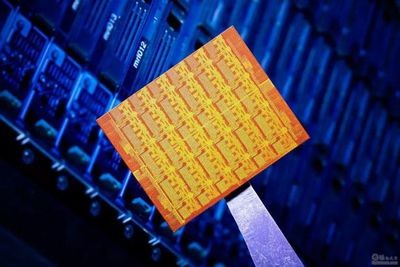Pos:
Home KnowledgeTechnologyDiamond thermal management technology improves the power of GaN nitride transistorsA team of researchers at the US Naval Research Laboratory (NRL) claims to have recorded the DC power density of a gallium aluminum nitride (AlGaN) barrier high electron mobility transistor (HEMT), semiconductor Today reports. The researchers replaced the silicon substrate of the epitaxial grown group III nitride device layer with diamond to achieve high power transistors and enhanced thermal management capabilities.
The team's goal is to achieve the high frequency performance and high power density required for commercial and military electronics. Due to its excellent thermal conductivity, diamond has previously been used to conduct high temperatures generated in high-frequency and high-power applications. One of the heat transfer techniques used is wafer bonding, while a more attractive alternative is to grow diamonds directly on the back of the device layer.
Building on previous work, the NRL-led team reversed the GaN/Si substrate and removed the silicon substrate. The exposed n-pole iii-n nucleation layer is etched away, leaving a GaN buffer layer about 700nm thick. Element Six Technologies applied a 30nm silicon nitride (SiN) barrier prior to chemical vapor deposition (CVD) of thick polycrystalline diamond layers.
The HEMT structure of NRL was constructed using a 20nm Al0.2Ga0.8N barrier, mesa plasma etching, ti/Al/Ni/au ohmic source-leakage contact deposition and annealing, Ni/au Shottky gate deposition, Ti/au contact pad overlay and plasma enhanced chemical vapor deposition (PECVD) Silicon nitride passivation process. The HEMT is manufactured in two stages, before and after replacing the silicon substrate with diamond, and the silicon nitride passivation is optimized to avoid current collapse during pulsed operation.
"Room-temperature Hall measurements and DC current-voltage characteristics suggest that the substrate side process does not significantly affect the mobility and carrier surface density of HEMT and thus its on-going resistance," the researchers report. In addition, only minor effects on threshold voltage and transconductance were observed."
Thermal reflection imaging (TRI) showed that the drain-source junction temperature of the silicon substrate HEMT increased to more than 150°C at a power density of 15W/mm dc (figure 1). In contrast, the temperature at the drain-source junction does not increase significantly at a power density of 24.2W/mm for diamond substrate HEMT. When the power density is higher than 24.2W/mm, the drain-source junction temperature of diamond substrate HEMT does increase, mainly due to the gate leakage current. Even so, the temperature at the drain-source junction did not exceed 176 ° c at a power density of 56W/mm. The highest temperature occurs in the gate region at the drain edge, which is 205℃.
Diamond-backed GaN HEMT (Gandi-2) has thermal resistance as low as 2.95°C-mm/W. GaN HEMT (Gandi-1) produced by the previous diamond replacement process has a higher thermal resistance of 3.91°C-mm/W. The higher thermal resistance is due to defects at the interface of the diamond substrate. Transmission electron microscopy (TEM) revealed the nano-sized gap at the interface between the 30nm silicon nitride layer and GaN of gandi-1 sample (Figure 2). In contrast, the Gandi-2 sample achieved "a sharp Gan-diamond interface and lower thermal resistance." GaN Hemts on protosilicon substrates (Gansi-1 and 2) have higher thermal resistance.
The researchers suggest that thinning or eliminating the silicon nitride barrier can reduce thermal resistance by up to 48%. However, this process also requires the elimination of gaps in the interface.
We focuses on diamond thermal management performance mining, currently has diamond heat sink, wafer level diamond, diamond coating (GaN) and other products and services, can be customized diamond thermal management solutions for various industries, welcome to discuss and cooperate.

 闽ICP备2021005558号-1
闽ICP备2021005558号-1Leave A Message